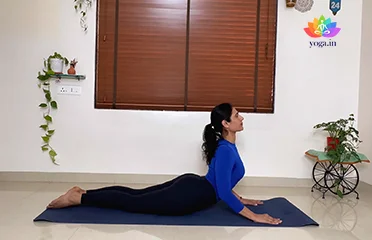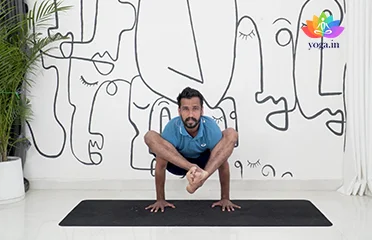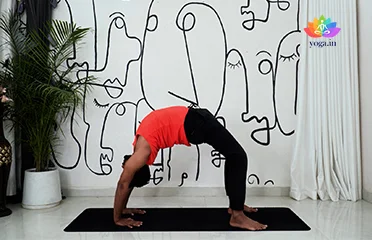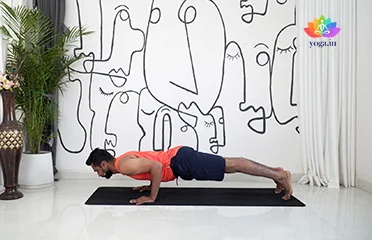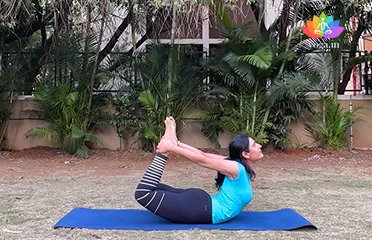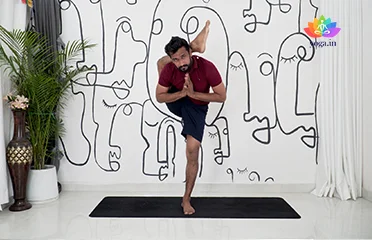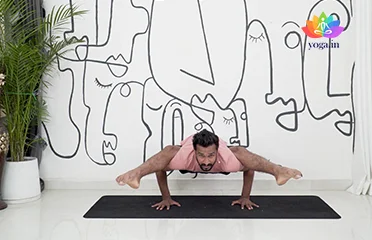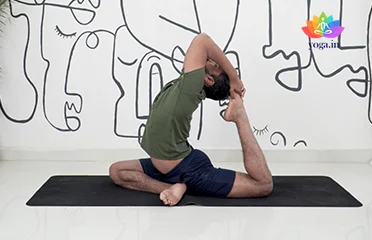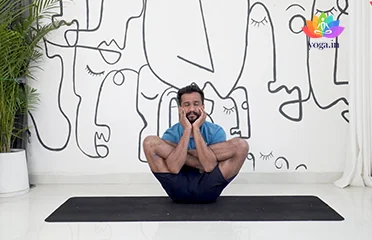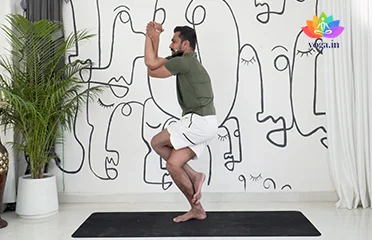Bhujangasana (Cobra Pose)
भुजंगासन / Cobra Pose
The Sanskrit name is derived from Bhujanga (भुजंगा) meaning cobra [�K]
Bhujapidasana (Shoulder-Pressing Pose)
भुजपीडासन / Shoulder-Pressing Pose
The Sanskrit name is derived from Bhuja (भुज) meaning arm/shoulder, Pida [�K]
Chakrasana (Wheel Pose)
चक्रासनI / Wheel Pose
The Sanskrit name is derived from Chakra (चक्रा) means wheel and asana [�K]
Chaturanga Dandasana (Low Plank Pose)
चतुरङ्ग दण्डासन / Low Plank Pose
The Sanskrit name is derived from Chatur (चतुर) meaning four, Anga (अङ्ग) [�K]
Dhanurasana (Bow Pose)
धनुरासन / Bow Pose
The Sanskrit name is derived from Dhanur (धनुर) means bow and Asana [�K]
Durvasasana (Sage Durvasa’s Pose)
दुर्वासासना / Sage Durvasa's Pose
The Sanskrit name is derived from the word Durva (दुर्वा) which [�K]
Eka Pada Koundinyasana (Sage Kaundinya&#
एक पाद कौण्डिन्यासन / Sage Kaundinya's Pose
The Sanskrit name is derived from Eka (एक) meaning one, Pada (पाद) [�K]
Eka Pada Rajakapotasana (King Pigeon Pos
एक पद राजकपोटासन / King Pigeon Pose
The Sanskrit name is derived from Eka (एक) meaning one, Pada (पाद) [�K]
Garbha Pindasana (Womb Pose)
गर्भ पिण्डासना / Womb Pose
The Sanskrit name is derived from the word Garbha (गर्भ) meaning an [�K]
Garudasana (Eagle Pose)
गरुडासन / Eagle Pose
The Sanskrit name is derived from Garuda (गरुडा) meaning eagle and [�K]
- 1
- 2
- 3
- 4
- 5
- ...
- 6
- 7
Yoga Poses for Arms
Yoga poses for arms are a series of asanas specifically designed to strengthen, tone, and increase the flexibility of the arms. Yoga can help relieve arm discomfort and improve overall arm health by promoting better blood circulation, reducing muscle tension, and enhancing joint mobility. Regular practice can lead to stronger, more flexible arms and improved overall upper body strength.
Understanding Yoga Poses for Arms:
Yoga poses for arms include a variety of asanas that target different muscles in the arms, shoulders, and upper back. These poses range from gentle stretches to more intense strengthening exercises. Understanding these poses involves recognizing how they work together to improve arm strength, flexibility, and endurance.
Yoga’s Role in Relieving Arm Discomfort:
Specific yoga practices and techniques can alleviate arm discomfort by increasing blood flow, reducing inflammation, and promoting relaxation. These techniques include:
- Strengthening Poses: Build muscle strength and endurance in the arms.
- Stretching Poses: Improve flexibility and reduce muscle tension.
- Balance Poses: Enhance coordination and stability, engaging the arm muscles.
Key Factors Contributing to Arm Discomfort:
Several factors can contribute to arm discomfort, including:
- Overuse: Repetitive activities or overworking the arm muscles.
- Poor Posture: Incorrect body alignment leading to strain on the arms.
- Lack of Exercise: Weak muscles due to inactivity.
- Injury: Previous injuries causing ongoing pain or stiffness.
- Stress: Tension and stress manifesting as muscle tightness.
Symptoms of Arm Discomfort:
Common symptoms associated with arm discomfort include:
- Pain: Sharp or dull pain in the arms, shoulders, or upper back.
- Stiffness: Difficulty moving the arms or shoulders freely.
- Weakness: Reduced strength or endurance in the arms.
- Numbness: Tingling or numb sensation in the arms or hands.
- Swelling: Inflammation or swelling in the arm muscles or joints.
Treatment of Arm Discomfort through Yoga and Pranayama:
Yoga and pranayama can be very beneficial in managing arm discomfort. Some effective practices include:
Specific Yoga Poses:
- Downward-Facing Dog (Adho Mukha Svanasana): Strengthens and stretches the arms and shoulders.
- Plank Pose (Phalakasana): Builds strength in the arms, shoulders, and core.
- Extended Side Angle Pose (Utthita Parsvakonasana): Stretches and strengthens the arms and upper body.
Pranayama Exercises:
- Ujjayi Breathing (Victorious Breath): Enhances focus and relaxes the mind, helping to reduce tension in the arms.
- Anulom Vilom (Alternate Nostril Breathing): Balances the nervous system and reduces stress.
Diet for Arm Health:
A balanced diet can help manage arm discomfort. Recommendations include:
- Protein-Rich Foods: Essential for muscle repair and growth. Include lean meats, beans, and nuts.
- Anti-Inflammatory Foods: Reduce inflammation with foods like turmeric, ginger, and leafy greens.
- Hydration: Drink plenty of water to stay hydrated and support muscle function.
- Omega-3 Fatty Acids: Found in fish, flaxseeds, and walnuts, these support joint health.
Caution for Arm Discomfort:
While practicing yoga for arm discomfort, it is essential to:
- Avoid Overexertion: Do not push yourself too hard; practice at a comfortable pace.
- Be Mindful of Pain: If a pose causes pain, stop and modify or avoid it.
- Warm-Up: Always start with a gentle warm-up to prepare the muscles.
Contraindications for Arm Discomfort:
Individuals with certain conditions should avoid specific yoga practices:
- Severe Arm Injuries: Avoid poses that put pressure on the injured area.
- Joint Problems: Be cautious with weight-bearing poses if you have joint issues.
- Seek Professional Guidance: Consult a yoga therapist or healthcare provider for personalized recommendations.


